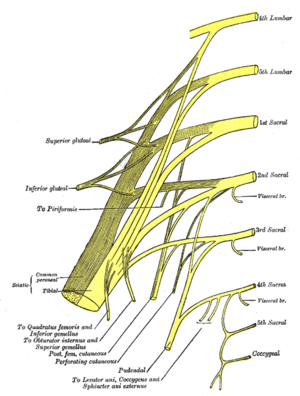Nerve plexus facts for kids
Imagine your body's electrical wires. A nerve plexus is like a busy junction box where many nerves meet, branch out, and then spread to different parts of your body. These special networks help send messages between your brain and your body. They make sure your muscles move and you can feel things.
Nerves that connect to your central nervous system (your brain and spinal cord) often group together in these plexuses. For example, there's a nerve plexus between each bone in your spine, called a vertebra. These nerves go in and out of your spinal cord.
You also have a big plexus under each arm. This one is full of nerves and blood vessels. It helps control your arm, hand, and fingers. Having these important bundles protected under your arm keeps them safe from harm. This is also why important blood vessels called arteries are usually deeper inside your body than veins.
What are Nerve Plexuses?
Nerve plexuses are like communication hubs. They allow nerves from different areas to combine and then split off. This makes sure that many parts of your body get the nerve signals they need. Without these networks, your body's communication system would be much less organized.
Different Kinds of Plexuses
Your body has several important nerve plexuses, each serving specific areas:
- Cervical plexus: This network is in your neck. It sends signals to your head, neck, and shoulders.
- Brachial plexus: Located near your shoulder and armpit. It controls your chest, shoulders, arms, and hands.
- Lumbar plexus: Found in your lower back. It helps control your back, tummy, groin, thighs, knees, and calves.
- Sacral plexus: This one is in your pelvis. It sends signals to your pelvis, bottom, private parts, thighs, calves, and feet.
- Celiac plexus (also called solar plexus): This plexus is deep inside your body. It helps control your internal organs, like your stomach and intestines.
- Coccygeal plexus: A small network near your tailbone (coccyx). It serves a small area around that bone.
- Auerbach's plexus: This plexus is found in the walls of your digestive system. It helps control how food moves through your stomach and intestines.
- Meissner's plexus (submucosal plexus): Also in your digestive system, this plexus helps control digestion and absorption of food.
Images for kids
See also
 In Spanish: Plexo nervioso para niños
In Spanish: Plexo nervioso para niños



